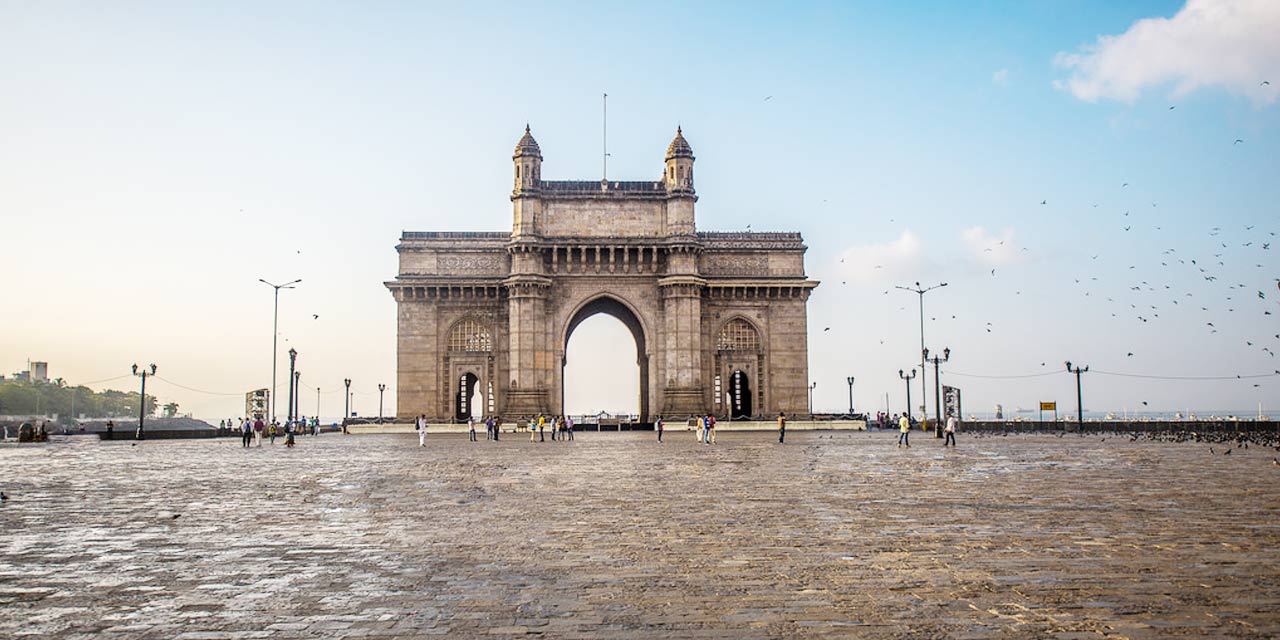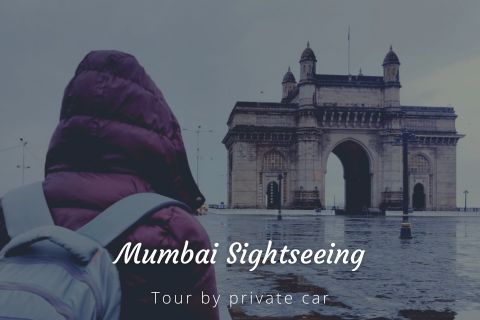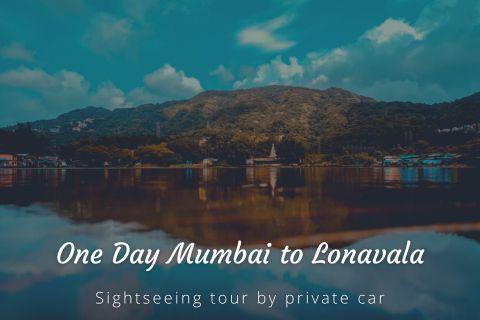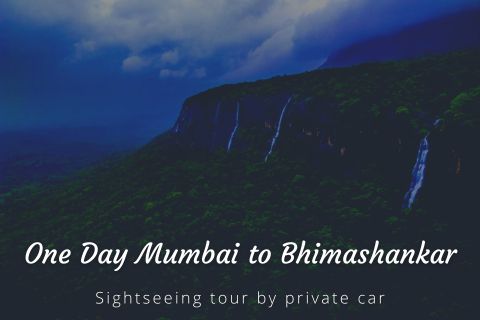
Gateway of India Mumbai Entry Fee
- Free entry
Gateway of India Mumbai Phone
09418 262 963
Quick Gateway of India Mumbai Facts
- Type: Monument
- Architectural style: Indo-Saracenic Revival architecture
- Height of Gateway of India: 26 m
- Construction started: March, 1913
- Inaugurated in: December, 1924
- Architect: George Wittet
- Address: Apollo Bunder, Colaba, Mumbai, Maharashtra 400001
Mumbai City Tour Packages
Gateway of India Mumbai Timings
| Day | Timing |
|---|---|
| Monday | 12:00 am – 12:00 am |
| Tuesday | 12:00 am – 12:00 am |
| Wednesday | 12:00 am – 12:00 am |
| Thursday | 12:00 am – 12:00 am |
| Friday | 12:00 am – 12:00 am |
| Saturday | 12:00 am – 12:00 am |
| Sunday | 12:00 am – 12:00 am |
Rating:  | 4/5 stars
| 4/5 stars
Based on total 69 reviews
Gateway of India Mumbai Address: Apollo Bandar, Colaba,Mumbai Maharashtra, 400001,India
If there is any landmark that the city of Mumbai can easily be identified with, it is unarguably the Gateway of India. This iconic waterfront monument dates back to the British Era, and ranks among the top places to visit in Mumbai.
A must visit tourist attraction of your Mumbai Tour, the majestic gateway is famous for its grand and imposing appearance and the sweeping views of the Arabian Sea which it provides. You don’t have to be an architecture fan to appreciate the Gateway of Mumbai. The salty breeze, the aroma of hot chai from the local tea-stall, and tourists eager to get a seating place by the sea add to the excitement of paying a visit to this tall arch.
Gateway of India Timings & Entry Fee
The Gateway of India is open to public at all times of the day and on every day of the week. However, the most pleasant times for a visit happen to be early mornings and evenings. This is when the winds are cooler and the heat of the afternoon is absent. If you visit in the evening, stay until sunset. Not only will you love the view of the sun dissolving into the Arabian Sea, you will also be able to marvel at the beautifully lit form of the gateway. The lighting is switched on only when it is sufficiently dark.
On special occasions, the Gateway of India is lit up in thematic colours. For instance, the tricolour of the Indian flag adorns this structure on Independence Day, the walls turn pink on Breast Cancer Awareness Day, etc.
Entry to the Gateway of India is free of charge, even though the place is under continuous protection of guards and police. The excessive surveillance and barricading is to prevent any illegal activity, especially as this monument is located next to the sea.
You can also carry your camera and peripheral equipment with you, without having to pay anything, for photo shoots as the backdrop is gorgeous. You will find many photographers who sell their services to tourists. They specialize in trick photography and perspective shots such as a frame of you holding the Gateway of India or eating it. They quote anywhere between INR 100 and INR 1000. If you decide to opt for their services, make sure to bargain hard.
Image Gallery of Gateway of India Mumbai
History Behind the Gateway of India
Although the foundation stone of the Gateway of India was laid in 1911, the actual construction of the impressive gateway began in 1915. The work was completed after almost a decade, in 1924. The primary reason for such a magnificent gate at the Bombay harbour was to celebrate the arrival of the English royalty in India. This fact is inscribed on top of the gateway itself.
The British King – Emperor George the Fifth, along with his wife, the Queen of England – Empress Mary landed at Apollo Bunder the same year that the foundation stone was laid. Subsequently, all the viceroys and governors who arrived from England to Bombay, used the Gateway of India to signal their formal entry into the country.
Architecture of the Gateway of India
The Gateway of India is essentially an archway. In architectural terms, the type of arch is triumphal, which is commonly seen in the major cities of most Commonwealth countries. The entire gateway was designed by George Wittet, a Scottish architect.
The structure stands 26 metres tall, with a 15-metre wide central dome flanked by four smaller turrets. The design is said to be Indo-Saracenic. This is a unique combination of traditional Indian and Muslim architecture with British styles from the Victorian Era such as Neo-Classical and Gothic Revival.
Notes of Islamic influence are evident in the lattices along the archways and turrets. These intricate net-like structures filter sunlight through them and cast enigmatic shadows on the floor and the inner walls of the gateway.
The structure is built mostly of yellow basalt, which lends it the typical ochre shade. Reinforced concrete was also used to lend some strength to the massive façade. This concrete is a special indissoluble one which will not dissolve into the sea. The central space opens out to two halls on either side with a capacity to hold about 600 people at once. However, nowadays, no one is allowed inside this triumphal arch.
Things to do at the Gateway of India
Historical sites like the Gateway of India not only offer an appealing sight to the eyes but also have certain elements that can only be experienced there:
1. If you enjoy riding the seas, pre-book your tickets to some exciting water sport activities that are offered on the Arabian Sea. There are speedboats that start at the Gateway of India and ferry you deeper into the sea to the actual location where the activity starts form.
2. Not a lot of people know that you can learn to sail in Mumbai. Sign up in advance for sailing classes and get to know the art of balancing your body and your sailboat. If you are afraid to steer your vehicle, you can bring along a group of 4 to 6 people with you and enjoy a relaxing sail experience.
3. There are a number of yachting clubs that operate in Mumbai, mostly from the Apollo Bunder area, close to the Gateway of India. If you wish to learn to steer a yacht or relax luxuriously onboard, you can book your experiences from several private operators.
4. Are you a party person? Then yacht parties are just what you’re looking for! There are several yachts that can be rented out for an evening or an entire night for you to celebrate a special occasion. Be prepared to loosen your purse-strings, though.
5. You can choreograph your own photo shoot with the Gateway of India in the background. Carry a tripod if you will be shooting your own pictures.
6. If you like to watch people from all walks of life, sit back at the viewing gallery by the sea and observe Mumbai’s cosmopolitan and local crowd as they swarm the area around the gateway.
7. Quench your thirst at the tea-stalls with some cutting masala chai – a local favourite. You can also munch on some bhel or vada pav from the food carts that set up shop here in the evenings.
8. Wait for the sun to set at the horizon and watch the sky change colours. All the boats and yachts look mesmerizing when the sky is ablaze at dusk.
9. If you plan on staying till it is dark, you will be able to see the Gateway of India lit up in all its glory. Even the luxurious 5-star hotel – Taj Mahal Palace nearby is decked up in lights and clearly visible from the gateway.
Interesting Facts About the Gateway of India
This historical monument has been popular ever since it came into existence. Here is some information that you may not have known before:
1. The Gateway of India cost 2 million rupees to be built back in the early 20th century. In current terms, that figure would be the approximate equivalent of 560 million rupees.
2. This symbolic monument figures on a number of postal stamps issued by the Postal Department of India.
3. In 1954, the Government of India issued currency notes of 5000 denomination with the Gateway of India printed on them.
4. Before the Gateway of India was constructed, the land was used by the local Marathi fishermen to bring their daily catch as it was a jetty.
5. The very royalty that the gateway was built to honour, never saw it with their own eyes. King George V and Queen Mary only saw a miniature model of the triumphal archway made of cardboard when they visited Imperial India.
6. The gateway is now owned and maintained by the Archaeological Survey of India.
Things to Keep in Mind While Visiting the Gateway of India
To ensure you have a smooth visit, don’t forget the following:
1. You will have to go through a metal detecting gate for security purposes. Bags may be checked at the discretion of the guards and the local police.
2. You may come across touts who try to sell you tickets to the monument, but remember that entry is free for all.
3. There are public toilets near the Gateway of India, but they are not cleaned often. Your best bet for a bio-break is to head to a café or a restaurant nearby. (You will find plenty of those as this part of Mumbai is a tourist magnet.)
4. Keep your belongings close to you as pick-pocketing is often reported here.
5. Do not lean out from the steps that face the harbour as the sea is quite deep, and a fall is mostly lethal.
Places to Visit Near the Gateway of India
There is no dearth of places to see in South Bombay. If you can get on a walking tour, you will be taken to most of the popular places which are worth your precious time. While the Gateway of India is the perfect place to begin your Mumbai tour, you can move on to any of these sightseeing spots nearby:
1. Colaba Causeway: This street is every shopper’s paradise. Only a short walk from the Gateway of India, the Colaba-Causeway Market is a string of road-side shops that sell clothing, junk-jewellery, souvenirs, books, street-food and various trinkets. Even if you do not wish to shop, stroll through this busy market to know where college-goers shop. Most of the shops open up after 9 AM and close by 10 PM each day.
2. Chhatrapati Shivaji Maharaj Vastu Sangrahalaya: Previously known as the Prince of Wales Museum, this palatial building in a garden houses over 50 thousand exhibits, mainly on history, art and culture. You will notice architectural similarities between the Gateway of India and this museum as they both were designed by the same architect – George Whittet.
The museum is closed on Mondays and stays open until 6 in the evening on all the other days, so plan your visit accordingly. You will find sculptures that date all the way back to the 2nd century A.D., and at the same time, find modern art collections here. Allow yourself at least a couple of hours here to soak in the rich cultural history of India.
3. Jehangir Art Gallery: For enthusiasts of modern art, this art gallery in Kala Ghoda offers multiple exhibition halls. Entry is free of charge and the art galleries are open on all days from 11 AM until 7 PM. If you really like a piece of art, you can buy it from the art shop, provided it’s on sale. The rates of every work of art are determined through auctions.
4. Regal Cinema: This movie hall happens to be the first air-conditioned one in the country. It is still a single-screen theatre, unlike most of the multiplexes today. So, pre-book your tickets if you are planning to watch a blockbuster show.
5. Marine Drive: South Bombay is a narrow strip of land, mostly reclaimed from the Arabian Sea. The entire strip is not more than 4 km in width. If you decide to get to the other end (width-wise) from the gateway, you will reach Marine Drive.
Colloquially this promenade is called Queen’s Necklace because of the glimmering lights that give it the appearance of a necklace with a string of pearls. This stretch of land is a favourite of joggers and street-sellers who sell everything from healthy juices to fried snacks. You can sit on the concrete pavement and watch the sunset as winds spray the salty water from the Arabian Sea on your face.
6. Alibaug: A short ferry ride from one of the public jetties near the Gateway of India will bring you to the fun-filled beach destination of Alibaug. There are a number of resorts and bungalows that can be booked in advance for a cosy weekend getaway here. Apart from the sandy coastline, you can visit some forts in this beach town. There is even a beach marathon that is held annually in Alibaug.
7. Elephanta Caves: If islands and caves are your thing, hop onto a ferry from Apollo Bunder to Elephanta Island. This island is renowned for the large network of caves and the rock sculptures inside which date back to the 2nd century B.C.
The Elephanta Caves have been declared a UNESCO World Heritage Site and are now maintained by the ASI (Archaeological Survey of India). Most of the caves here are Hindu cave temples and a few are Buddhist caves. The carvings inside the temples largely tell stories from Hindu and Buddhist mythologies. Most of the sculptures are monolithic as artists of that era would specialize in rock carvings.
How to Reach the Gateway of India
Located at the tip of South Mumbai, reaching the Gateway of Mumbai is very easy. You can choose from any of the modes of transport listed below:
Local Trains: If you are travelling on the Central or Harbour Line, you can get off at CSMT (Chhatrapati Shivaji Maharaj Terminus) and then hail a taxi. On the Western Line, Churchgate is the nearest railway station. Both the local train stations are about 2 km away from the gateway.
If you are comfortable walking, you can do just that. It should take roughly 20 minutes to cover the distance on foot. To buy train tickets, you download the UTS app and complete your transaction online. Otherwise, be prepared to get on a queue for a regular ticket. First class tickets cost several times more, but you get to skip the queue and also board a coach with a smaller crowd.
City Buses: There are bus stops at 3 – 4 minutes of walking distance from this monument. You will easily find a number of buses that will drop you here. Even the frequency of the State-run BEST buses are good.
Be sure to carry loose change on you, as bus conductors are generally reluctant to change currency notes of higher denominations. Every bus has special seats for the physically challenged, the aged and women. Remember to always board a bus from the rear door and alight from the front door.
Private Transport: You can hire a private cab (kaali-peeli taxi, also known as black-and-yellow taxi) or a radio taxi offered by private names such as Uber, Ola, Meru, etc for a comfortable ride,. Note, however, that in this part of Mumbai, auto-rickshaws do not ply (unlike in the rest of the city). Alternatively you can opt for a private cab from top car rental companies in Mumbai, for a hassle-free commutation.
If you choose to drive, you may have to park some distance away from the gateway at a free or paid parking lot. Despite the search for a good parking spot, long drives to Apollo Bunder are always refreshing. If travelling from suburban Mumbai, get on the Eastern Freeway for a smooth drive. From Bandra, you can use the Bandra-Worli Sea Link towards South Bombay.
We at Mumbai Tourism, a division of Holidays DNA offer all-inclusive Mumbai tour packages to have a perfect time while exploring the tourist attractions of Mumbai. Please feel free to reach us by filling the Contact Us form to know more about the packages.




